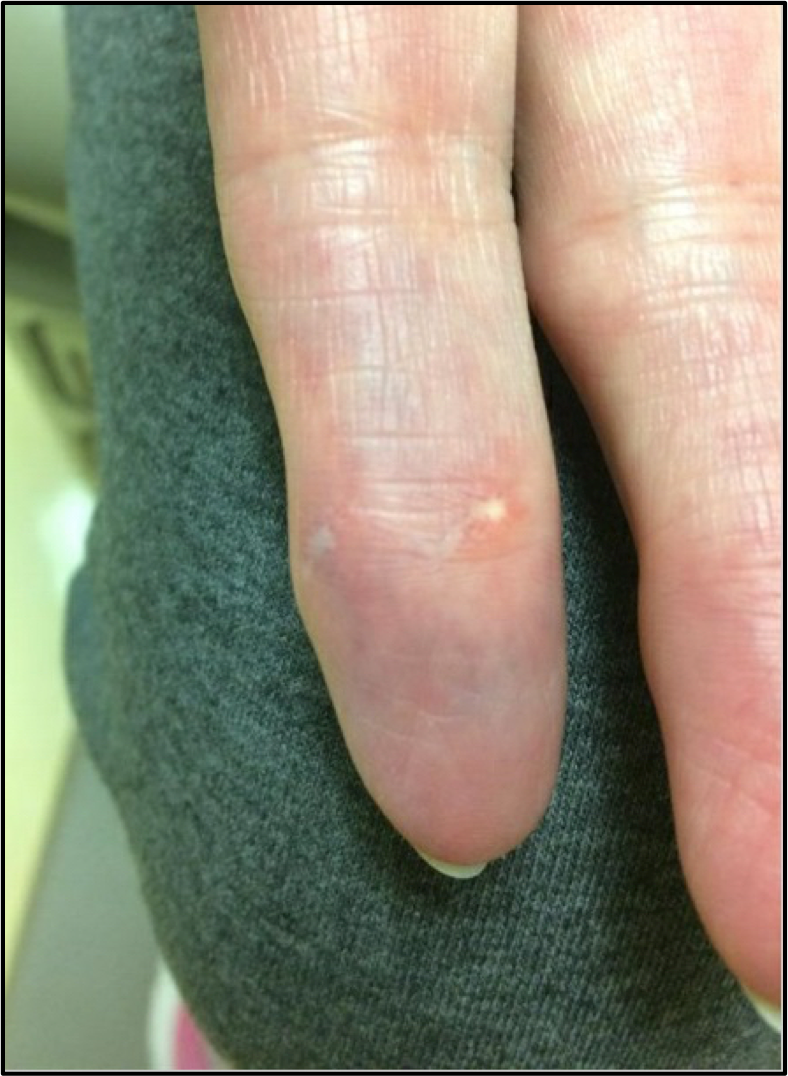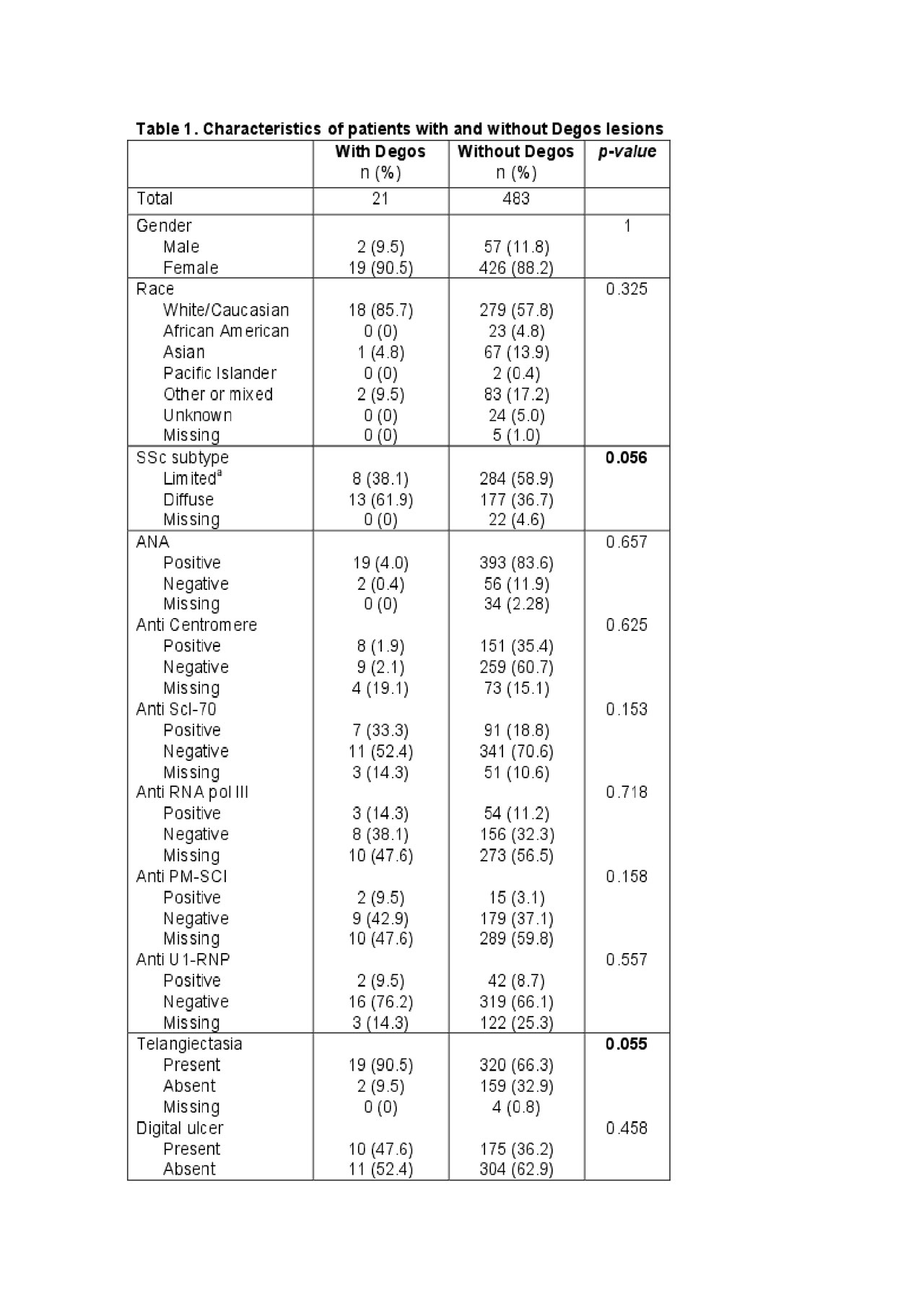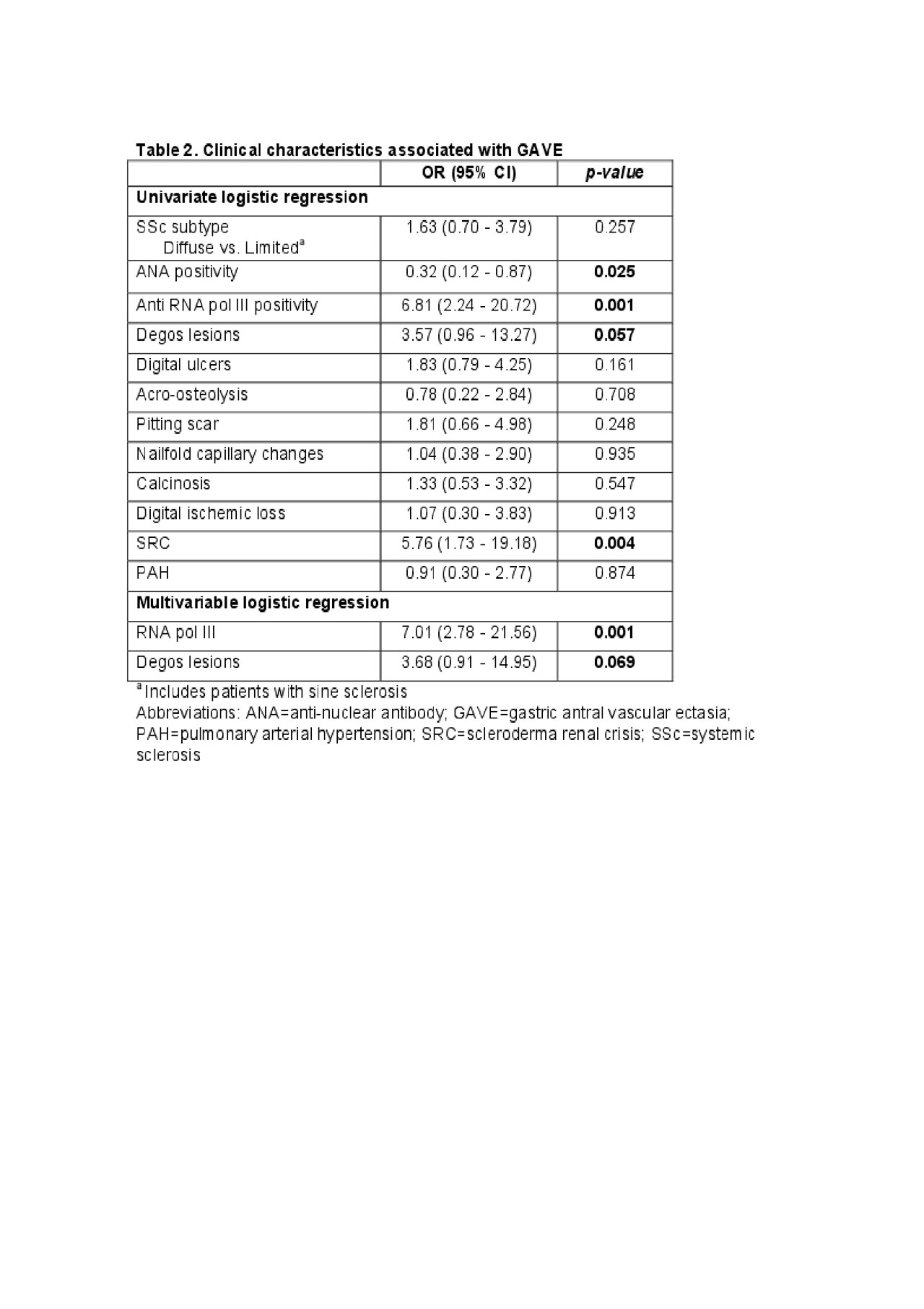Session Information
Date: Tuesday, November 12, 2019
Title: Systemic Sclerosis & Related Disorders – Clinical Poster III
Session Type: Poster Session (Tuesday)
Session Time: 9:00AM-11:00AM
Background/Purpose: Degos disease, also known as malignant atrophic papulosis (MAP), is a rare small-vessel vasculopathy that has characteristic cutaneous manifestations consisting of erythematous telangiectatic rims with porcelain-white atrophic centers with variable gastrointestinal vasculopathy that can be fatal (Figure 1). Studies suggest that endothelial dysfunction and immune dysregulation may play a role in subsequent intimal proliferation and occlusive vasculopathy in cutaneous Degos lesions. Lesions that mimic the cutaneous findings in Degos disease have been described in other rheumatic diseases, although their significance is unclear. We sought to evaluate the prevalence and clinical associations of Degos lesions in patients with systemic sclerosis (SSc).
Methods: This was a retrospective cohort study of 504 patients with SSc, who were seen at a tertiary referral center between 1998 and 2018. All patients fulfilled 2013 ACR/EULAR classification criteria for SSc. Demographics, autoantibodies, and cutaneous and internal organ manifestations of patients with and without Degos lesions were compared using chi-squared tests for categorical variables, accounting for missing data. Logistic regression analyses were performed to evaluate whether Degos lesions were predictive of any internal organ complications.
Results: Of 504 SSc patients, 21 (4.2%) had Degos lesions. In 19 (90.5%), Degos lesions were found on the hands, notably the fingers. Two patients had Degos lesions involving the lower extremities. Degos lesions were significantly associated with acro-osteolysis, calcinosis, and digital ischemic loss (Table 1). There was a trend towards statistically significant associations with diffuse SSc subtype and telangiectasias. We further assessed whether Degos lesions were predictive of any internal organ complications. We found a trend, both in univariate and multivariate logistic regression analyses, towards an association with GAVE (Table 2).
Conclusion: Degos lesions are present in 4.2% of our SSc cohort. Degos lesions are associated with other cutaneous manifestations of SSc including acro-osteolysis, calcinosis, and digital ischemia, supporting an underlying ischemic and vasculopathic etiology. Our findings suggest that Degos lesions may be associated with the presence of GAVE.
To cite this abstract in AMA style:
Song P, Chung M, Li S, Fiorentino D, Chung L. Prevalence and Clinical Associations of Degos Lesions in Systemic Sclerosis [abstract]. Arthritis Rheumatol. 2019; 71 (suppl 10). https://acrabstracts.org/abstract/prevalence-and-clinical-associations-of-degos-lesions-in-systemic-sclerosis/. Accessed .« Back to 2019 ACR/ARP Annual Meeting
ACR Meeting Abstracts - https://acrabstracts.org/abstract/prevalence-and-clinical-associations-of-degos-lesions-in-systemic-sclerosis/



